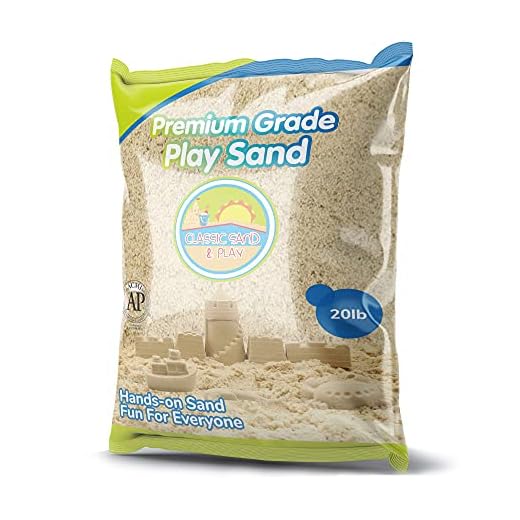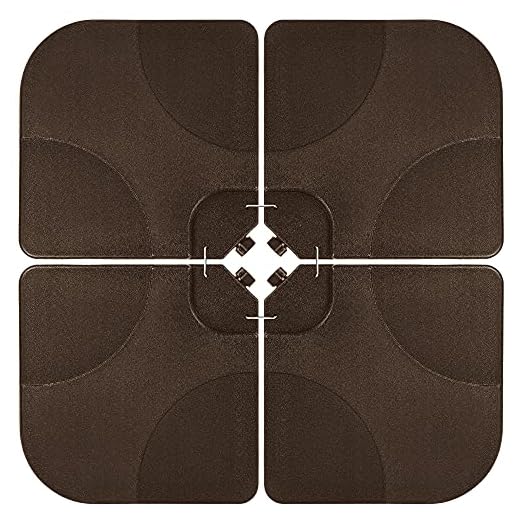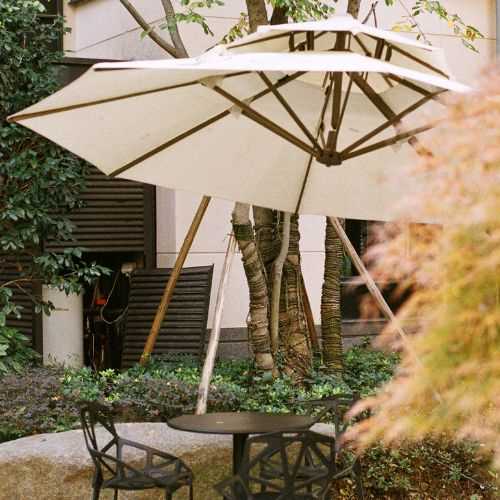




Opting for a sturdy option like crushed granite or fine gravel can significantly enhance the stability of your canopy support system. This article provides insights into various materials that can anchor your outdoor shade structure effectively. With a focus on durability and weight, you’ll learn how to select the most suitable medium to ensure safety and longevity.
Homeowners and outdoor enthusiasts will find this guide particularly useful when setting up their outdoor spaces. By understanding the properties of different materials, you can make an informed decision that accommodates both aesthetics and functionality.
Throughout this article, we explore the benefits and drawbacks of specific materials, including their cost-effectiveness and ease of maintenance. You’ll also discover practical tips on how to properly fill and secure your support to withstand varying weather conditions. This knowledge will empower you to create a comfortable and stable environment for relaxation and gatherings.
Choosing the Right Material for Your Umbrella Stand
For stability and durability, opt for a fine-grained option that provides excellent weight without excessive bulk. A blend of silica and quartz is often recommended, as it offers a solid foundation while being easy to handle.
Consider the moisture content of your chosen material. Drier options tend to settle better and minimize shifting over time. Additionally, look for materials that are resistant to compaction, ensuring consistent support beneath your structure.
Key Features to Consider
- Weight: Heavier materials will keep your setup secure during windy conditions.
- Granule Size: Finer granules create a tighter pack, enhancing stability.
- Moisture Resistance: Select an option that won’t absorb water, preventing shifting.
- Durability: Long-lasting materials reduce the need for frequent replacements.
Another factor is the ease of cleanup. Choose options that won’t stain or require extensive maintenance. A well-maintained stand will not only look better but will also contribute to the longevity of your outdoor equipment.
Conducting a quick test can be beneficial. Pour a small amount of your chosen material into a container and observe how it settles. A uniform and compact arrangement indicates a suitable choice.
Understanding the Importance of Proper Weight
Choosing the right weight for a sunshade structure is key to ensuring stability and safety. Insufficient weight can lead to tipping, especially in windy conditions, while excessive weight can be cumbersome and impractical. The right balance is necessary to maintain functionality and comfort.
Factors such as the size of the canopy and environmental conditions play a significant role in determining the required weight. For example, larger canopies require more stability to withstand gusts of wind. Similarly, outdoor areas with frequent breezes necessitate a heavier support system to prevent accidents.
Weight Recommendations
When selecting appropriate materials for adding weight, consider the following:
- Material Density: Heavier materials such as concrete or stone provide better support compared to lighter alternatives.
- Base Design: A wider base distributes weight more effectively, enhancing stability.
- Environmental Factors: Consider local weather patterns; areas prone to strong winds may require additional weight.
Regular checks on the weight and stability of the structure can prevent mishaps. Adjustments may be necessary based on seasonal changes or after extreme weather events.
Types of Sand Suitable for Umbrella Bases
Choosing the right material for stabilizing a sunshade is critical for safety and durability. Different varieties of granular substances offer unique benefits that can enhance the stability of such fixtures.
One common option is coarse grain material, which provides excellent drainage and reduces the chances of mold growth. This type is often preferred due to its ability to hold weight without compacting over time.
Characteristics of Suitable Granular Materials
- Coarse Sand: Larger particles create air pockets, allowing for better drainage and preventing water accumulation.
- Play Sand: This finely ground material is smooth and safe for children, making it an appealing choice for family-friendly areas.
- Crushed Stone: While not traditional, small crushed stones can provide solid support and are less likely to shift compared to finer materials.
- Quartz Sand: Known for its durability and resistance to weathering, this option maintains its integrity over time.
When selecting the right granular substance, consider the intended use and environmental factors. Proper weight distribution is essential to ensure stability throughout varying weather conditions.
Ultimately, opting for a material that combines weight, drainage, and durability will enhance the overall functionality and safety of your sunshade support.
Grain Size and Its Impact on Stability
Choosing the right grain size significantly influences the stability of a support structure. Finer particles tend to shift more easily under pressure or movement, while coarser materials offer better anchoring capabilities. This difference is crucial for ensuring that outdoor canopies remain securely positioned, especially in windy conditions.
A granular composition with a mix of sizes can enhance stability. Larger grains interlock more effectively, providing a solid foundation. On the other hand, smaller particles can fill gaps and prevent shifting, but may not provide the same level of resistance against lateral forces. Understanding these interactions helps in selecting the most appropriate material for reliable support.
Impact of Grain Size on Performance
- Coarse Grains: Provide enhanced stability and are less prone to shifting.
- Fine Grains: Can compact tightly but may lead to reduced drainage and potential movement during adverse weather.
- Mixed Grains: Offer a balance by combining the anchoring strength of larger particles with the compaction benefits of smaller ones.
Prioritizing grain size can lead to a more secure setup. The right choice can minimize the risk of collapse or repositioning, ensuring a safer outdoor experience.
Comparing Natural vs. Synthetic Sand Options
Choosing the right material for stabilizing outdoor shade structures involves evaluating both natural and synthetic varieties. Each option has unique characteristics that can influence performance, longevity, and maintenance.
Natural materials, such as fine grains from riverbeds or beaches, provide a traditional aesthetic and are often more eco-friendly. They tend to be heavier, which can enhance stability. However, they may require more upkeep, as they can compact over time and may need to be replaced or replenished. Additionally, natural options can be affected by weather conditions, leading to erosion or movement.
Evaluating Synthetic Alternatives
On the other hand, synthetic materials offer consistent texture and weight. These products are engineered to resist moisture and degradation, making them a durable choice for outdoor use. They are often lighter, which can be a disadvantage in terms of stability, but many manufacturers design them to interlock or provide added weight options. Maintenance is typically minimal, as synthetic variants do not compact like their natural counterparts.
- Natural:
Pros: Aesthetic appeal, heavier weight
Cons: Requires regular maintenance, can erode
- Synthetic:
Pros: Durable, low maintenance
Cons: May be lighter, requiring additional weight
Ultimately, the decision hinges on personal preferences and environmental considerations. Assessing the specific conditions of the outdoor space will aid in selecting the most suitable material. Consideration of factors such as climate, exposure to elements, and desired longevity will guide the choice between these options.
Tips for Filling Your Umbrella Base Effectively
Choose the right material to ensure stability. Common options include gravel, water, and concrete. Each has its advantages, but selecting the right one depends on your specific needs and local climate conditions.
Consider the weight of the chosen filling. A heavier option will provide better resistance against wind, while lighter materials may be easier to manage. It’s important to strike a balance between portability and stability.
Material Recommendations
- Gravel: Provides good drainage and is relatively heavy.
- Water: Easy to fill, but may freeze in colder climates.
- Concrete: Offers excellent weight but requires more effort to prepare.
Before filling, ensure the container is clean and free of debris. This will help achieve the best results and prevent any issues that could arise from contaminants.
When filling, use a funnel or scoop to avoid spills. This will help maintain a tidy workspace and simplify the process.
After filling, seal the container properly. This prevents any leaks or erosion of the material over time, ensuring long-lasting stability.
Finally, periodically check the integrity of the filling. Over time, some materials may settle or degrade, requiring refilling or replacement to maintain optimal performance.
Maintenance and Longevity of Material in Support Structures
Regular upkeep is necessary to ensure the durability of the filling used in support structures. Begin by inspecting the container periodically to check for any signs of leakage or degradation. If the material appears compacted or damaged, it may need to be replaced to maintain stability.
To prolong the life of the filling, consider the following practices:
- Store the support structure in a sheltered area during harsh weather conditions to prevent moisture damage.
- Clean the exterior regularly to avoid mold and mildew buildup, which can affect the integrity of the material.
- Inspect the seals and caps to ensure they are secure, preventing any loss of filling over time.
- Consider using a protective cover when the structure is not in use, shielding it from the elements.
Implementing these steps can greatly enhance the lifespan of the filling, ensuring your support structures remain functional and secure for many seasons to come.
Best sand for patio umbrella base
Features
| Color | Gray |
Features
| Part Number | FUB41B |
| Model | FUB41B |
| Color | Black |
| Release Date | 2023-12-22T00:00:01Z |
Features
| Part Number | TS72018 |
| Color | Dark Blue |
| Size | 8ft |
Features
| Part Number | LI-4ZQV-2C83 |
| Model | LI-4ZQV-2C83 |
| Color | Natural |
| Size | 20 lb |
Features
| Part Number | SKY6265 |
| Model | SKY6265 |
| Color | Brown |
| Size | 4-Piece |
Features
| Part Number | UBP18181-BR |
| Model | UBP18181-BR |
| Warranty | One year warranty on manufacturing defects |
| Color | Bronze |
| Is Adult Product | |
| Release Date | 2024-01-01T00:00:01Z |
| Size | 18-Inch |
Video:
FAQ:
What type of sand is best suited for a patio umbrella base?
The ideal sand for a patio umbrella base is typically coarse or medium-grained sand. This type of sand provides better stability and weight to keep the umbrella secure against wind. Avoid fine sand, as it can easily shift or be blown away, compromising the umbrella’s stability. Additionally, some people opt for a mix of sand and gravel to enhance the weight and drainage properties of the base.
How much sand do I need to fill my patio umbrella base?
The amount of sand required to fill a patio umbrella base depends on the size and design of the base itself. Most standard umbrella bases require around 50 to 100 pounds of sand for optimal stability. It’s important to check the manufacturer’s recommendations for your specific base model. A well-filled base will help prevent tipping and provide better support for your umbrella during windy conditions.









